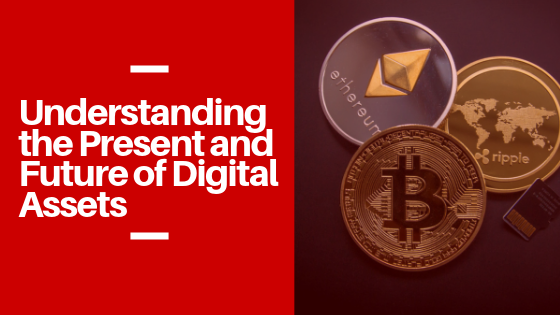Understanding the Present and Future of Digital Assets
VerifyInvestor.com
As we see digital financial assets and blockchain technology being adopted by larger and more high-profile companies, it is important to recognize that recent developments are the result of a longer process on innovation and investment. Even if some companies have not yet gone "all in" on blockchain, research and development has been going on behind the scenes as forward-thinking institutions explore the potential of this new technology. (One example is Overstock.com and Medici Ventures, which has been investing heavily in blockchain-related ventures through companies like tZERO, VerifyInvestor.com’s parent company) Elsewhere, the industry has had a few years to understand the impact that blockchain technology may have on their business.
Structuring Digital Asset Exchanges- Decentralization vs. Centralization
One major thread of the conversation involves centralization versus decentralization. The momentum behind blockchain and cryptocurrency has often been driven by excitement about decentralizing financial and informational networks. This could potentially lead to better security and stability across the board; for example, increasing liquidity in financial markets and opening up access to capital and investment.
However, while decentralization is in many ways desirable, there are some advantages to centralization in some contexts. In particular, digital asset exchanges can benefit in some critical ways. First, it is easier for regulators to control a central party. Second, it can be easier for technologies to be developed, managed, and iterated in a centralized structure. At least right now, the security and autonomy associated with decentralization come at the cost of convenience. The early approaches of decentralized exchanges have actually been fairly centralized: decentralized parties participating in an exchange controlled by a centralized party. Whether true and thorough "decentralization" across the board is even a desirable goal is somewhat up for debate. When it comes to mass adoption in the near term, most people will choose convenience even if it means some loss of control or autonomy.
The Future: Exchanges, Consolidation, and Prospects for Liquidity
While there is a multitude of cryptocurrency exchanges active in the market right now, not all of them are of high quality or destined to succeed. Much of current crypto trading is done by specialty funds and wealthy individuals, while institutional investing has yet to reach its potential. One reason is that institutions with fiduciary duties have to be able to trust the infrastructure of the exchange they are using, and when exchanges are offshore, unregulated, undercapitalized, and lack transparency in their operations, they are not seen as trustworthy enough for institutions to depend on.
Another aspect of the market that needs to evolve is the products themselves. Many of the crypto assets that are available for investment or trading right now are not of institutional quality. Without good products, investment and reinvestment in liquidity are going to be muted. What the market needs is for institutions to create quality products that other institutions are interested in trading. This is especially true of security tokens or tokenized securities which derive their investment value through some connection to an asset, company, or investment stream. If the underlying quality of security tokens or tokenized securities are poor, then it’ll be difficult to attract retail investors, much less institutional investors.
Looking at the future of the blockchain space, over time, blockchain and cryptocurrency are eventually going to be more common and widely spread to affect everyone one way or another.
Updated 3/21/2023
One major thread of the conversation involves centralization versus decentralization, with the momentum behind blockchain and cryptocurrency often driven by excitement about decentralizing financial and informational networks. However, there are some advantages to centralization in some contexts, particularly for digital asset exchanges, which can benefit from easier regulatory control and the ability to develop, manage, and iterate technologies in a centralized structure.
Looking at the future of the blockchain space, the market needs quality products that institutions are interested in trading, particularly in the case of security tokens or tokenized securities that derive their investment value through some connection to an asset, company, or investment stream. The article suggests that over time, blockchain and cryptocurrency are eventually going to be more common and widely spread to affect everyone one way or another. Although this may turn out to be true, with recent chaos in the crypto space, this remains to be seen. However, to reach mass adoption, the industry must continue to evolve and address issues such as infrastructure trustworthiness, regulatory control, and the development of quality products. Especially now considering the controversy surrounding FTX.
